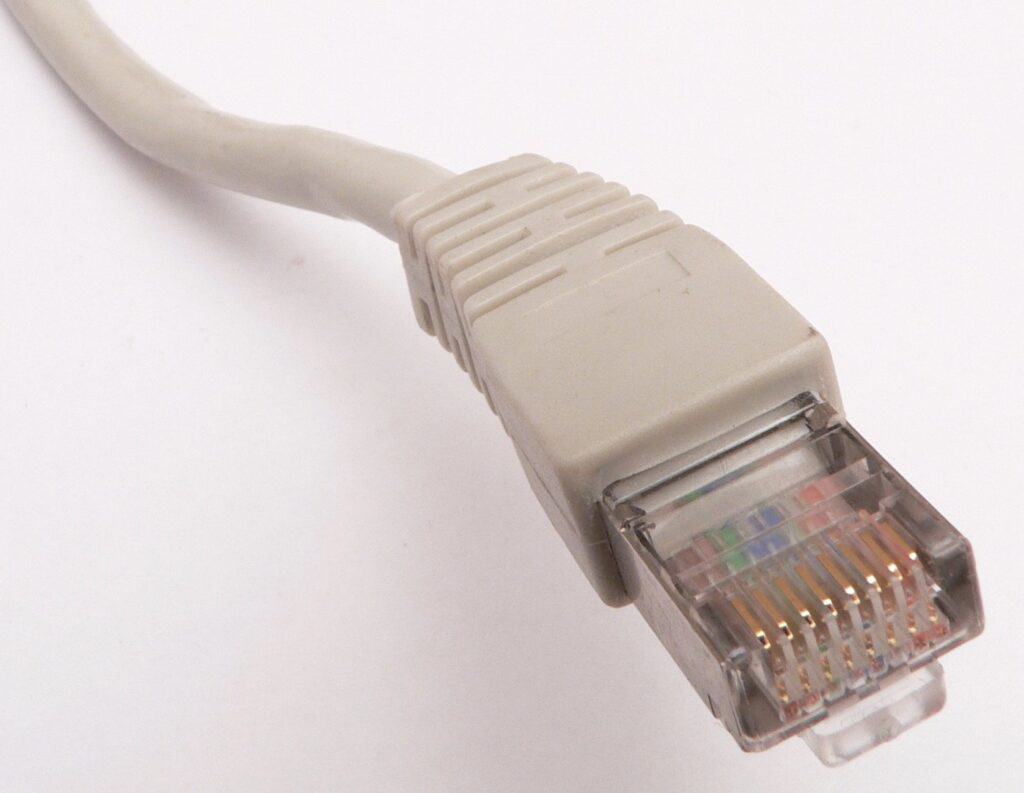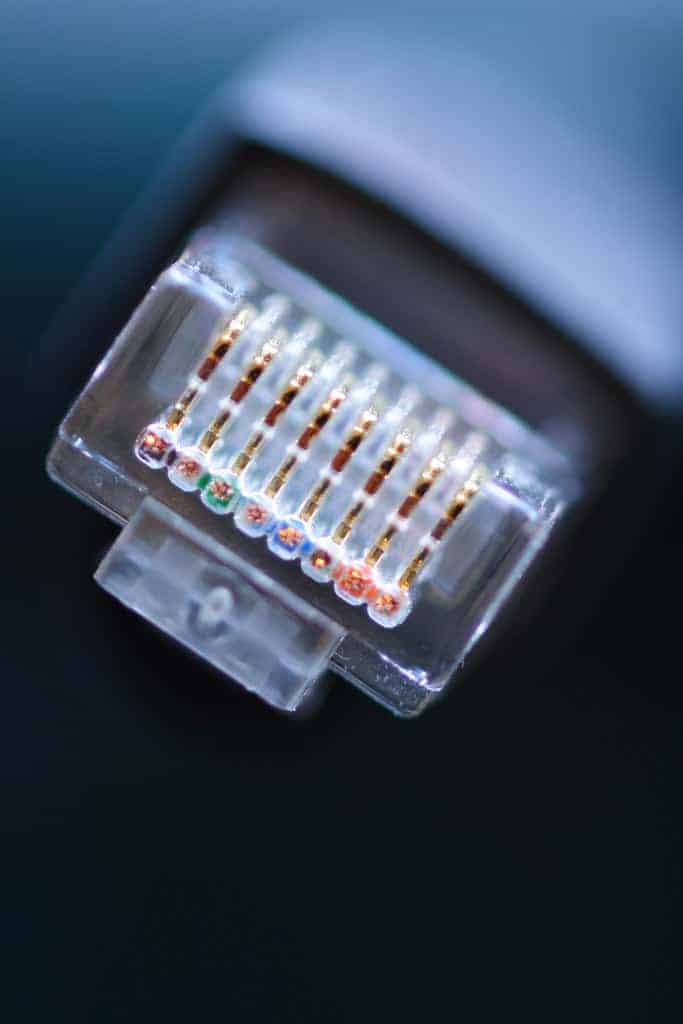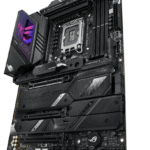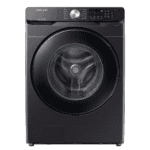RJ45 (which stands for Registered Jack-45) is a standardized network interface for physically connecting computers. It’s most commonly referred to on Ethernet-based local area networks (LANs). RJ46, however, doesn’t really exist as a standard. There is no consensus or agreement on what RJ46 actually is. Several possibilities exist when searching for information about an RJ46 connector, but they typically fall into two categories:
Demystifying RJ45 and the Mythical RJ46
What is RJ45?
RJ45 is a type of connector. We commonly use it for Ethernet networking. You’ll find it on the ends of Ethernet cables that plug into computers, routers, and switches. It has eight pins and a modular design. This design allows for easy insertion and removal.
The Mysterious RJ46
RJ46 doesn’t exist. You might see some products or tutorials referencing RJ46. But, it’s likely a misunderstanding or a mistake. The official list of registered jacks only goes up to RJ48. If you see RJ46, it’s likely referring to RJ45.
RJ46 Most Commonly Refers To
1. Non-standard connectors:
- Misidentified RJ45:
- Some sources may mistakenly use “RJ46” when referring to the standard RJ45 connector used for Ethernet cables.
- This is likely due to confusion or misinformation online.
- Proprietary or niche connectors:
- Some manufacturers may have created their own custom connector using the RJ46 name.
- These connectors would have no standardized features or compatibility with other systems.
- Without specific information about the manufacturer or context, it’s impossible to determine the purpose or characteristics of such a connector.
2. Alternative names for existing connectors:
- In some rare cases, “RJ46” might be an alternative name for another standardized connector, such as the RJ11 (used for telephone lines) or the RJ12 (used for some data connections).
- However, again, without specific context, it’s difficult to determine the exact connector being referred to.
Why the Confusion?
The confusion may stem from a few factors.
- Similar Appearance: Both RJ45 and other modular connectors look alike. It’s easy to mistake one for another.
- Incorrect Labeling: Some manufacturers might mislabel RJ45 connectors as RJ46.
- Industry Jargon: Some people in the tech industry might use “RJ46” as slang for a specific type of RJ45 wiring or configuration. But, this is not a standard term.
Key Differences Between RJ45 and RJ46
| Feature | RJ45 | RJ46 |
|---|---|---|
| Existence | Standardized and widely used | Does not exist officially |
| Applications | Ethernet networking, telecommunications | N/A |
| Number of pins | 8 | N/A |
| Design | Modular, with a locking tab | N/A |
What to Do If You Encounter “RJ46”
- Double Check: Verify if it’s a typo or a mislabeling.
- Consult the Manual: Refer to the product’s documentation for the correct connector type.
- Seek Clarification: If unsure, ask a knowledgeable professional or contact the manufacturer.
Key Takeaways
- Comparing RJ45 and RJ46: RJ45 is an existing standard. RJ46 is not.
- Real-World Applications: Exploring how these connectors impact everyday technology use.
- Technical Insights: Looking into the specifications that define RJ45 and comparing to the standard-less RJ46.
List Of Registered Jack Types
Source: https://en.wikipedia.org/wiki/Registered_jack#Types
| Code | Connector | Usage |
|---|---|---|
| RJA1X | 225A adapter | Connector for a modular plug to a four-prong jack |
| RJA2X | 267A adapter | Connector for splitting one modular jack to two modular jacks |
| RJA3X | 224A adapter | Connector for adapting a modular plug to a 12-prong jack |
| RJ2MB | 50-pin | 2–12 telephone lines with make-busy arrangement |
| RJ11(C/W) | 6P2C | Establishes a bridged connection for one telephone line (6P4C if power on second pair) |
| RJ12(C/W) | 6P6C | Establishes a bridged connection for one telephone line with key telephone system control ahead of line circuit |
| RJ13(C/W) | 6P4C | Similar to RJ12, but behind the line circuit |
| RJ14(C/W) | 6P4C | For two telephone lines (6P6C if power on third pair) |
| RJ15C | 3-pin weatherproof | For one telephone line for boats in marinas |
| RJ18(C/W) | 6P6C | For one telephone line with make-busy arrangement |
| RJ21X | 50-pin | Multiple (up to 25) line bridged T/R configuration |
| RJ25(C/W) | 6P6C | For three telephone lines |
| RJ26X | 50-pin | For multiple data lines, universal |
| RJ27X | 50-pin | For multiple data lines, programmed |
| RJ31X | 8P8C | Allows an alarm system to seize the telephone line to make an outgoing call during an alarm. Jack is placed closer to the network interface than all other equipment. Only 4 conductors are used. |
| RJ32X | 8P8C | Like RJ31X, this wiring provides a series tip and ring connection through the connecting block, but is used when the customer premises equipment is connected in series with a single station, such as an automatic dialer. |
| RJ33X | 8P8C | This wiring provides a series tip and ring connection of a KTS line ahead of the line circuit because the registered equipment requires CO/PBX ringing and a bridged connection of the A and A1 lead from behind the line circuit. Tip and ring are the only leads opened when the CPE plug is inserted. Typical usage is for customer-provided automatic dialers and call restrictors. |
| RJ34X | 8P8C | Similar to RJ33X, but all leads are connected behind the line circuit. |
| RJ35X | 8P8C | This arrangement provides a series tip and ring connection to whatever line has been selected in a key telephone set plus a bridged A and A1 lead. |
| RJ38X | 8P4C | Similar to RJ31X, with a continuity circuit. If the plug is disconnected from the jack, shorting bars allow the phone circuit to continue to the site phones. Only 4 conductors are used. |
| RJ41S | 8P8C, keyed | For one data line, universal (fixed loop loss and programmed) |
| RJ45S | 8P8C, keyed | For one data line, with programming resistor |
| RJ48C | 8P4C | For four-wire data line (DSX-1) |
| RJ48S | 8P4C, keyed | For four-wire data line (DDS) |
| RJ48X | 8P4C with shorting bar | For four-wire data line (DS1) |
| RJ49C | 8P8C | For ISDN BRI via NT1 |
| RJ61X | 8P8C | For four telephone lines |
| RJ71C | 50-pin | 12-line series connection using 50-pin connector (with bridging adapter) ahead of customer equipment. Mostly used for call sequencer equipment. |
Many of the basic names have suffixes that indicate subtypes:
- C: flush-mount or surface mount
- F: flex-mount
- W: wall-mount
- L: lamp-mount
- S: single-line
- M: multi-line
- X: complex jack
For example, RJ11 comes in two forms: RJ11W is a jack from which a wall telephone can be hung, while RJ11C is a jack designed to have a cord plugged into it. A cord can be plugged into an RJ11W as well.
Understanding RJ45 Connectors

Physical Characteristics
RJ45 connectors typically have a long and rectangular physical appearance. RJ45 is widely used for Ethernet connections, is typically made of rigid PVC, allowing visibility of wire connections.
RJ45 Configuration
RJ45 features an 8P8C (8 position 8 contact) configuration but generally uses only half of these connections at any given time.
RJ45 Applications
RJ45 is a staple in computer networking, particularly suited for linking Ethernet cables to routers.
So What Is RJ46 Exactly?
RJ46 as a standard doesn’t exist. However, different companies will use the term to mean different things. In most cases RJ46 will be the word companies use to refer to a modified (non-standard) RJ45 implementation.
Other times they may use it to incorrectly refer to an RJ11 connector (4 connection / 6 position – 6p4c) which when you take the “4” from the number of connections and the “6” from positions you could draw the conclusion that it is somehow RJ-46.
The bottom line is to remember that there really is no such thing as an “RJ-46” cable as it relates to the Registered Jack standards. So if someone ever refers to an RJ46 cable it’s important to follow-up with them and try to get a better understanding of what they’re actually referring to.
Tables: Quick Facts and Comparisons
| Feature | RJ45 Connector | RJ46 Connector |
|---|---|---|
| Usage | Ethernet Connections | Non-Standard Applications |
| Configuration | 8P8C (4 used typically) | No Set Configuration |
| Material | Rigid PVC | No Set Material |
| Notes | Established | No Standard Exists |







